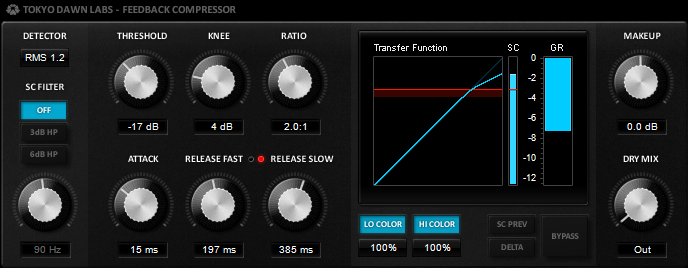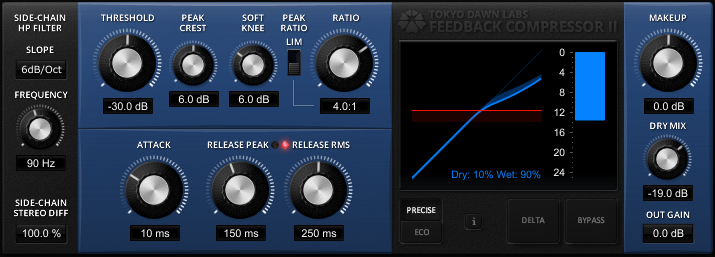moses
hardliner
I don't know if this is possible, but I was thinking what would be cool is if you added a feature where the latency could be turned on and off. Sort of like the difference between the L3 and L3 LL? I know your plugin already "looks" ahead.
Anyways, I'm using your compressor consistently on my mix buses
I'm not really sure what you mean.
The first 150 samples of the 151 sample latency are directly related to the linear-phase up and down-sampling filters. The last sample is related to a performance optimization inside the compressor algorithm, the compressor itself does not "look ahead". The former can't be avoided without removing the oversampling stage and it is essential for the warm and creamy sound of the compressor. The latter can be avoided, but at the cost of worse CPU performance (~30% !).
The compressor is made for mastering/mixing purposes in mind. Latency shouldn't matter in these cases.



 ) and a few unusual approaches.
) and a few unusual approaches.
